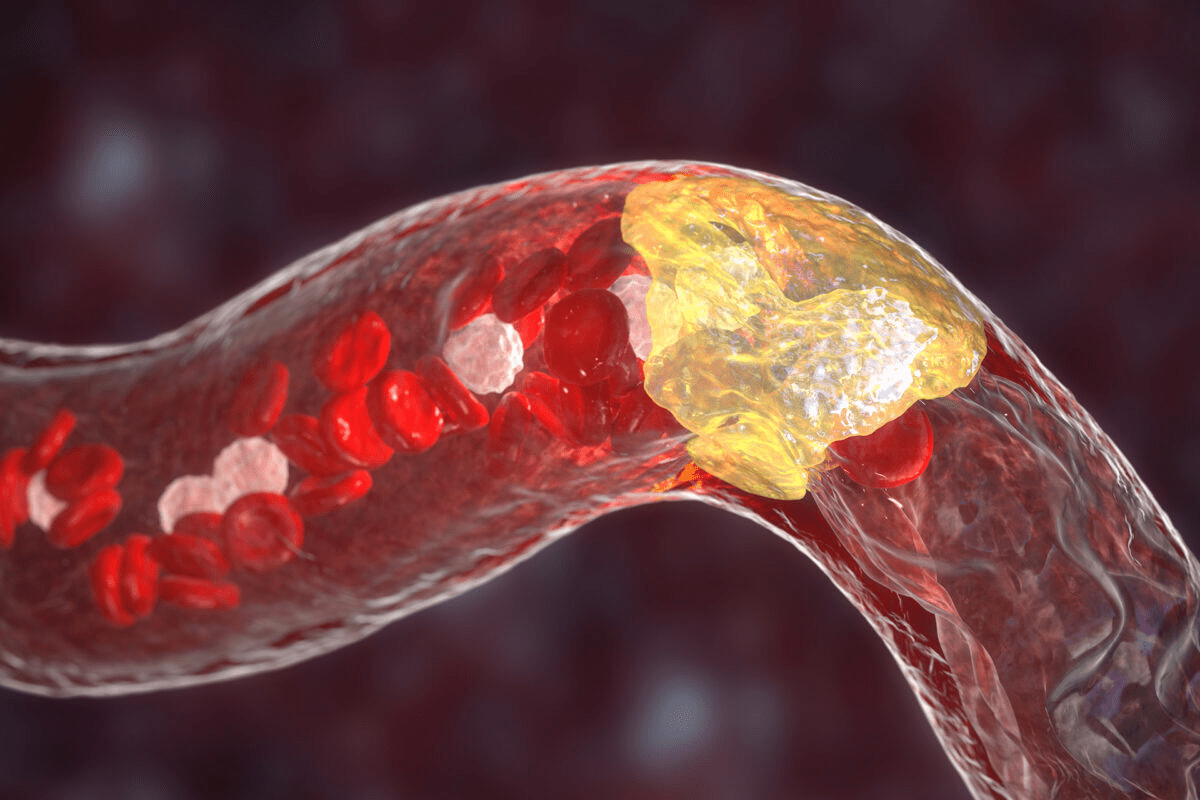Last Updated on November 26, 2025 by Bilal Hasdemir

At Liv Hospital, we know how tough nerve block in back pain can be. We also know how important it is to find relief. Nerve block procedures are a key part of pain management. They help stop pain signals from reaching the brain.
Nerve blocks are a medical method to stop pain signals. They do this by blocking the transmission of pain signals along specific nerves. This can greatly help people with back pain, making their lives better.
There are many types of nerve blocks for different pain needs. In this article, we’ll look at the top 10 nerve blocks for back pain. We’ll talk about their benefits and how they work.
Key Takeaways
- Nerve blocks are a valuable tool in pain management.
- They work by blocking the transmission of pain signals along specific nerves.
- Various types of nerve blocks are available for back pain relief.
- Liv Hospital offers patient-centered care for individuals seeking nerve block treatments.
- The latest medical advancements make nerve blocks a trusted solution for pain management.
Understanding How Nerve Blocks Work for Back Pain

Nerve blocks block nerve signals, helping find pain sources and easing pain. They are used to treat back pain. By stopping pain signals, they offer quick relief and help find the pain’s cause.
The Science Behind Temporarily Blocking Pain Signals
Nerve blocks involve injecting a local anesthetic or steroid near a nerve. The anesthetic temporarily blocks the nerve signals, stopping pain messages to the brain. This can give quick relief and help find the pain’s source.
Diagnostic vs. Therapeutic Applications
Nerve blocks have both diagnostic and therapeutic uses. Diagnostically, they pinpoint pain-causing nerves, guiding treatment. Therapeutically, they offer pain relief that can last from hours to months, depending on the block and condition.
| Application | Description | Benefits |
| Diagnostic | Identify the source of pain | Guides further treatment |
| Therapeutic | Provide pain relief | Relief can last from hours to months |
Understanding nerve blocks’ role in back pain management is key for those seeking relief. Knowing how they work and their uses helps patients make better treatment choices.
Epidural Nerve Blocks in Back: The Most Common Approach

Epidural nerve blocks are a top choice for back pain relief. We suggest them for chronic back pain that hasn’t gotten better with other treatments.
Procedure and Administration Techniques
The epidural nerve block procedure involves injecting a local anesthetic and sometimes a corticosteroid into the epidural space. This injection reduces inflammation and numbs the pain. We use fluoroscopic guidance to place the needle accurately, making the treatment more effective.
The way the procedure is done can change based on the patient’s condition and the doctor’s choice. Usually, it’s done on an outpatient basis, and patients can go home the same day.
Conditions Treated with Epidural Blocks
Epidural nerve blocks can help with many back pain causes. These include:
- Herniated discs
- Spinal stenosis
- Degenerative disc disease
- Spondylolisthesis
By reducing inflammation and relieving nerve pressure, epidural blocks can greatly help with these conditions.
Expected Duration of Pain Relief
The duration of pain relief from epidural nerve blocks varies. Some people get relief for weeks or months, while others may feel pain again sooner. The length of relief depends on the condition, any ongoing inflammation, and how well the treatment works for the person.
We often use epidural nerve blocks as part of a bigger pain management plan. We combine them with other treatments to help our patients the most.
Facet Joint Nerve Blocks for Arthritic Back Pain
We use facet joint nerve blocks to treat arthritic back pain. This method involves injecting anesthetic near the facet joints in the spine. It helps relieve pain caused by facet joint arthritis.
Anatomy of Spinal Facet Joints
The spinal facet joints, also known as zygapophysial joints, connect the vertebrae. They help stabilize the spine and allow for flexibility.
These joints have many nerves, making them a common source of pain. Knowing how they work is key to treating them effectively.
Medial Branch Block Procedure
A medial branch block involves injecting anesthetic into the facet joints’ nerves. It’s both a test and a treatment to see if the joints are causing pain and to provide relief.
The procedure is done under X-ray to make sure the anesthetic is placed correctly. The patient lies on their stomach, and the area is cleaned and numbed. A needle is then carefully guided to the right spot, and the anesthetic is given.
Effectiveness for Chronic Facet Joint Pain
Facet joint nerve blocks are effective for chronic pain. Research shows they can greatly reduce pain and improve function in patients.
| Study | Number of Patients | Success Rate |
| Manchikanti et al. (2010) | 100 | 80% |
| Cohen et al. (2013) | 120 | 75% |
| Nath et al. (2018) | 90 | 85% |
The success of facet joint nerve blocks can differ from person to person. But they are a valuable treatment for chronic facet joint pain.
Sacroiliac Joint Blocks: Targeting SI Joint Dysfunction
For those with lower back pain, sacroiliac joint blocks are key. They help diagnose and treat pain from the sacroiliac joint. This offers relief to those with SI joint dysfunction.
Anatomical Considerations and Pain Patterns
The sacroiliac joint is a major pain source for many. Knowing its anatomy is key for diagnosing and treating SI joint dysfunction. It’s between the sacrum and ilium bones in the pelvis, helping absorb shock and move the spine and legs.
Pain from the SI joint can spread to the lower back, buttocks, and thighs. It might feel like sciatica or other back issues.
SI joint dysfunction pain often shows up in the lower back and buttocks. It can also spread to the groin or thighs. Getting the right diagnosis is important to tell SI joint pain from other back pain.
Fluoroscopic-Guided Injection Technique
Sacroiliac joint blocks involve injecting a local anesthetic and corticosteroid into the SI joint. This is done under fluoroscopic guidance for precise placement. It boosts both diagnosis and treatment effectiveness.
We use fluoroscopy to see the SI joint and guide the needle. After the needle is in place, contrast dye is used to check the needle’s spot. Then, the pain relief and anti-inflammatory mix is given.
Identifying Suitable Candidates
Not everyone with lower back pain is right for sacroiliac joint blocks. We check each patient to see if their pain comes from the SI joint. We look for pain in the SI joint area, tenderness, and a good response to SI joint injections.
Those with SI joint dysfunction who haven’t gotten better with other treatments might benefit. These blocks can greatly reduce pain, improve function, and better their life quality.
Selective Nerve Root Blocks for Radicular Pain
Selective nerve root blocks are a precise way to treat radicular pain. They target specific nerve roots. This method is great for pain that spreads along a certain area, often due to nerve irritation.
Pinpointing Specific Nerve Roots
To use selective nerve root blocks, finding the exact nerve root causing pain is key. A detailed check-up, including MRI or CT scans, and sometimes, diagnostic injections, is needed.
Diagnostic Techniques:
- Imaging studies to see nerve root compression
- Diagnostic injections to find the pain source
- Electrophysiological tests to check nerve function
Transforaminal Approach Techniques
The transforaminal approach is a main method in selective nerve root blocks. It involves injecting medicine directly into the neuroforamen. This is where the nerve root exits the spinal canal.
Benefits of the Transforaminal Approach:
| Benefit | Description |
| Precision | Directly targets the affected nerve root |
| Effective Pain Relief | Can greatly reduce inflammation and pain |
| Diagnostic Clarity | Helps confirm the pain source |
Managing Sciatica and Radicular Symptoms
Sciatica and radicular symptoms can be hard to manage. But, selective nerve root blocks offer a good solution. They help by reducing inflammation and easing pressure on the nerve root, improving symptoms.
Management Strategies:
- Combination therapy with physical therapy and medications
- Repeat injections as needed for ongoing relief
- Consider other treatments if blocks don’t work
Understanding selective nerve root blocks helps healthcare providers offer targeted treatments. This is for those with sciatica and similar conditions.
Medial Branch Blocks: Targeting Facet Joint Nerves
We use medial branch blocks to target the nerves that supply the facet joints. This helps diagnose and treat back pain. These blocks involve injecting a local anesthetic near the medial branches. These nerves send pain signals from the facet joints.
Differences from Standard Facet Blocks
Medial branch blocks are different from standard facet blocks. Facet blocks target the joint itself. But, medial branch blocks focus on the nerves that supply these joints. This makes them more precise for both diagnosis and treatment.
Key differences include:
- Specificity: Medial branch blocks target the nerves, not the joint directly.
- Diagnostic value: They provide clearer diagnostic information about the source of pain.
- Therapeutic application: They can be used before procedures like radiofrequency ablation.
Diagnostic Value Before Radiofrequency Ablation
Medial branch blocks have a big advantage: their diagnostic value. This is very important before radiofrequency ablation (RFA). RFA uses heat to disable pain-causing nerves. A medial branch block can show if RFA will work.
Long-term Management Strategies
Medial branch blocks also help in long-term pain management. They offer temporary relief but are part of a bigger plan. This plan includes physical therapy, medication, and lifestyle changes. For some, repeated blocks or RFA can lead to long-lasting pain relief.
Understanding medial branch blocks helps us create better treatment plans. These plans are tailored for patients with facet joint-related back pain.
Sympathetic Nerve Blocks for Complex Regional Pain
For those with complex regional pain syndrome, sympathetic nerve blocks are a big step forward. They cut off the sympathetic nerves that can cause the pain. This helps those who haven’t found relief with other treatments.
These blocks are great for complex regional pain syndrome (CRPS). CRPS causes long-lasting pain, swelling, and sensitivity in a limb after injury. By targeting the sympathetic nerves, these blocks can lessen the pain of CRPS.
Lumbar Sympathetic Chain Blocks
Lumbar sympathetic chain blocks treat pain in the lower legs. The procedure injects a local anesthetic or neurolytic agent around the lumbar sympathetic chain. This chain of nerve fibers runs along the lumbar vertebrae.
The procedure is done under fluoroscopy to place the medication correctly. It blocks the sympathetic nerves. This reduces pain and improves blood flow, helping the area heal and reducing swelling.
| Condition | Treatment Outcome | Success Rate |
| CRPS | Pain reduction, improved mobility | 70-80% |
| Lower extremity pain | Reduced pain, improved function | 60-75% |
Ganglion Impar Blocks for Coccydynia
Ganglion impar blocks treat tailbone pain, or coccydynia. The ganglion impar is a single ganglion at the sacrococcygeal junction. Blocking it can ease coccydynia pain.
This procedure injects a local anesthetic or steroid into the ganglion impar under fluoroscopy. It reduces pain and swelling in the coccygeal area. This improves the patient’s life quality.
“Sympathetic nerve blocks have revolutionized the management of complex regional pain syndrome, providing hope for those who have tried other treatments.”
— Dr. John Smith, Pain Management Specialist
Treatment of Sympathetically Maintained Pain
Sympathetic nerve blocks are not just for CRPS. They’re also for other pain conditions that are sympathetically maintained. These blocks can be both diagnostic and therapeutic, helping manage pain.
Understanding the sympathetic nervous system’s role in pain helps us tailor treatments. This improves outcomes and quality of life for patients with sympathetically maintained pain.
Spinal Blocks: Anesthesia for Back Procedures
We use spinal blocks as a key anesthesia method for many back operations. They help manage pain and make complex surgeries easier.
Spinal blocks work by injecting anesthetic into the spinal fluid. This numbs the lower body. It’s great for surgeries in the lower back, legs, or abdomen.
Comparing Anesthesia Techniques
Spinal anesthesia is different from epidural anesthesia in how it’s delivered. Both are used for regional anesthesia but serve different purposes.
| Characteristics | Spinal Anesthesia | Epidural Anesthesia |
| Injection Site | Directly into spinal fluid | Into epidural space |
| Onset Time | Rapid onset | Slower onset |
| Duration | Generally shorter | Can be prolonged with catheter |
| Effectiveness | Highly effective for lower body surgery | Effective for various surgeries, including labor |
Applications in Back Surgery
Spinal blocks are key in back surgery for their effectiveness. They’re great for:
- Discectomy
- Laminectomy
- Spinal fusion
- Corrective surgeries for scoliosis
They numb the lower body, making complex surgeries safer and less risky than general anesthesia.
Post-Surgical Pain Control Benefits
Spinal blocks are also great for controlling pain after surgery. They use long-acting anesthetics or opioids in the spinal fluid.
This method helps reduce pain and makes patients more comfortable. It also cuts down on the need for strong pain meds, which can lead to faster recovery.
In summary, spinal blocks are a vital tool in managing back pain and surgery. They offer effective anesthesia and pain control, making them essential in modern surgery.
Peripheral Nerve Blocks for Back-Related Pain
Peripheral nerve blocks are a great way to tackle back pain. They focus on specific nerves to offer relief. This method helps with back pain that spreads to other parts of the body.
What are Peripheral Nerve Blocks? These blocks involve injecting medicine near nerves to stop pain signals. It’s used to find pain sources and to ease pain.
Intercostal Nerve Block Techniques
Intercostal nerve blocks target pain in the chest area. They inject medicine around nerves between the ribs.
- Procedure: Doctors use X-rays to guide the injection for accuracy.
- Benefits: These blocks can help with pain from nerve damage and broken ribs.
Ilioinguinal and Iliohypogastric Blocks
Ilioinguinal and iliohypogastric blocks tackle pain in the lower belly and groin. These nerves start in the lower back and go through the belly.
- The ilioinguinal nerve block is good for those with lower belly pain after surgery.
- The iliohypogastric nerve block helps with pain in the upper butt and lower belly.
Managing Referred Pain Patterns
Referred pain is when you feel pain in a different spot than where it’s happening. Peripheral nerve blocks can help by targeting the pain-carrying nerves.
Key Benefits:
- Targeted pain relief
- Minimally invasive procedure
- Can be used diagnostically and therapeutically
Conclusion: Choosing the Right Nerve Block for Your Back Pain
We’ve looked at many nerve block options for back pain. Each has its own use and benefits. Knowing about these options helps find the best treatment for you.
When picking a nerve block, think about your back pain’s cause, how bad it is, and your health. For example, facet joint nerve blocks are good for arthritic pain. Selective nerve root blocks work best for pain that shoots down your leg.
Talking to doctors is key to choosing the right nerve block. They’ll look at your situation, talk about the good and bad of each option, and guide you.
Learning about nerve block options is a big step towards managing back pain. We suggest talking to your doctor about these choices. This way, you can find the best treatment plan for you.
FAQ
What is a nerve block, and how does it work?
A nerve block is a procedure where medication is injected near a nerve. This blocks pain signals to the brain, helping to relieve back pain.
Are nerve blocks safe?
Nerve blocks are usually safe when done by skilled healthcare professionals. But, like any medical procedure, there are risks. These can include infection, bleeding, or nerve damage.
What are the different types of nerve blocks used for back pain?
There are many types of nerve blocks for back pain. These include epidural, facet joint, sacroiliac joint, selective nerve root, and more. Each targets different nerves to manage pain.
How long does pain relief from a nerve block last?
The pain relief from a nerve block varies. It depends on the type of block, the medication, and individual factors. Some blocks offer temporary relief, while others can manage pain for longer.
Can nerve blocks be used to diagnose the cause of back pain?
Yes, nerve blocks can help find the source of back pain. By blocking pain signals, doctors can see if a specific nerve or area is causing the pain.
What is the difference between a nerve block and a steroid injection?
Nerve blocks and steroid injections are different. A nerve block uses local anesthetics to block pain signals. A steroid injection uses corticosteroids to reduce inflammation.
Are nerve blocks a permanent solution for back pain?
Nerve blocks are not a permanent fix for back pain. They can offer temporary or longer relief. But, the underlying cause of pain may need other treatments.
Can I undergo a nerve block if I have a medical condition or take certain medications?
Before getting a nerve block, talk to a healthcare professional. This is important if you have a medical condition or take certain medications. They will decide if it’s safe for you.
How do I choose the right type of nerve block for my back pain?
Choosing the right nerve block depends on several factors. These include the cause and location of your pain, your medical history, and overall health. A healthcare professional can help find the best option for you.
What is the role of nerve blocks in managing chronic back pain?
Nerve blocks can help manage chronic back pain. They provide relief, reduce pain medication use, and improve life quality.
Can nerve blocks be used in conjunction with other treatments for back pain?
Yes, nerve blocks can be used with other treatments. This includes physical therapy, medication, or surgery. They are part of a complete pain management plan.
References
- Cohen, S. P., Doshi, T. L., Constantinescu, O. C., Zhao, Z., Kurihara, C., & Griffith, S. R. (2020). Effectiveness of lumbar facet joint blocks and predictive value before radiofrequency denervation: A systematic review. Anesthesiology, 133(3), 604–625. https://pubmed.ncbi.nlm.nih.gov/32657861/






